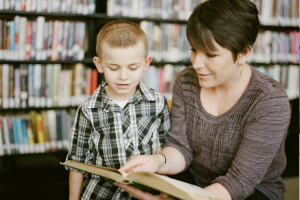Nerf Guns – What Are We Afraid of? by Debra Kessler, Psy.D.

For the holidays I gave a Nerf gun to my 8-year -old nephew. He was delighted. It was his first Nerf gun. He took great joy in taking aim at the window, door or any place where he was allowed to shoot. It was the first time I saw genuine spontaneous pleasure cross his otherwise polite and reserved face. Unfortunately, it will probably be his last Nerf gun. His father, as we were departing from the gathering, made it clear that he did not like toy guns and did not want them in his house.
Parenting of this young man consists of directing him to stay clean, be polite and to hug everyone at the gathering to thank them for their gift. He is directed on what to eat, how to eat and where to be. His parent’s goal for him is to be a baseball player, so he can get a scholarship someday or to be a model, so they can be proud of him.
I was struck by the constraints this little guy lives with. Why are his parents so restrictive? Why is his dad so averse to his child having a Nerf gun? I am then reminded of many of the families that come to my office with concerns about their children. They are trying to raise respectful, hard working, loving children but get perplexed when it is not turning out like that. Johnny rages, Sue hits and yells at other kids, Jane doesn’t do her chores and doesn’t do what her mother asks, Sara and Jimmy pick at themselves, biting their nails and skin until it bleeds. Fears of their children becoming self-destructive or the next “Columbine killer” swirl in the heads of these parents.
Among the many things to be considered when helping a child and his family is how the family deals with negative feelings. While there are violent images around our children all the time – movies, cartoons, video games, how do they learn about their own feelings? As a society we have little space for children to be mad, sad, hurt or angry, especially when we as parents are the target of these distressed feelings. Where is the space for our children to learn about negative feelings?
There are many answers to the question why parents have difficulty with their children’s negative feelings. Like the quintessential story about unleashing the unknown, our children’s distress is like Pandora’s Box. I often hear parent’s express this experience in comments such as “I don’t know what to say.” “I am afraid it won’t stop.” “I was never allowed to talk to my parent’s that way.” These responses are deeply rooted in the memory of the parent. Some of the memories are conscious, while others are unconscious.
As children our angry responses may have been met with 1) abandonment – “go in your room and don’t come out until you are calm”, “you are too sensitive” 2) parental attacks and aggression – “See you don’t like it either when I hit you back!”, the back of a parent’s hand or punishment, or 3) parental injury – accusations of being “disrespectful” or the tearful parent asking the child to notice how hurt he or she is by the child’s behavior. Any of these responses teach us that anger is something that was intolerable, unacceptable and/or dangerous. Consequently, anger gets experienced as either a threat to the most important thing in our lives – the connection to important others, or a threat to the connection with ourselves as experiencing an understandable feeling. These types of responses prevent anger from taking on the constructive role it can serve, helping us understand the threat that triggered a protective response.
Perhaps a different lens on the role of anger in our children can be helpful. Anger is a primal response to the sense of threat. That threat can relate to physical safety or emotional safety such as hurt and fear. Not being seen or understood by those around us is a very threatening experience to a child’s developing sense of who they are and where they fit in the world. Part of an individual’s development is building the capacity to have the words to express this. Until this skill is developed, much of the distressed feeling is expressed through non-verbal channels, yelling, tantrums/meltdowns, throwing, biting, kicking and rageful facial expressions. While these are not socially acceptable ways for one to communicate, in our children these are the means that are available when they are overwhelmed by their distress.
So what do Nerf guns have to do with this? There seems to be a belief that if we keep our children away from objects that express anger in violent or destructive ways, such as Nerf guns, our children won’t grow up to be violent or destructive. While this may seem logical, it assumes that our children are the sum total of what they are allowed/not allowed to do and dismisses the fact that we are hard wired with many emotions that are essential to our survival. Anger and aggression in the face of an attack is a vital, life preserving response. We hear stories of parents who find extraordinary super-human strength to fight off attackers or free their loved one from under a car. These are the constructive expressions of this intense, essential life force.
Play with Nerf guns or other aggressive play can open up an opportunity to share, explore and give language to these intense negative feelings. Killing imagined attackers and playing with themes of the drama of being a dominant aggressor, a powerless victim or a protector creates a place to explore these critical parts of the human character. When a parent recoils from the expression of anger and denies opportunities for expression of anger and aggression, how does the child learn about these parts of himself? We are at more risk of having children who are violent or destructive to themselves or others when we ignore or punish the expression of anger.
Nerf guns or other expressions of our anger safely directed and shared are a vital part of learning about this part of our humanness. When anger is explored without parental aggression or fear, children can become more accepting and thoughtful about their angry and aggressive responses. We as parents are more likely to be successful in achieving our goal of raising a child, who is respectful, hard working and loving when we also support their access to their constructive use of their vital, life preserving capacity to be angry.
Tags: child development, good parenting, over-parenting, parenting









While I agree with the basic idea of providing children with channels to express emotions, I feel strongly that toy guns are a bad channel. As with most of the basic gun/antigun arguments, the reasons are more complex than a toy, a gun, or even killing. They have to do with the importance of learning some lessons correctly the first time around.
In my house, toy swords, light sabers, model tanks, … are fine. Toy guns are not. The reason for this may seem a bit counterintuitive; I expect my children to grow up handling firearms. I come from a long line of gun owners. We have a family history that includes gun fights in the old west. I have a number of firearms in the house (behind lock and key). I am comfortable around firearms. I am comfortable because I have had basic firearms handling behavior built into me since I was a child and I know that I instinctively handle a firearm properly, even if it ceases to be the immediate focus of my attention. When I pick up a firearm, my finger instinctively goes to the trigger guard, not to the trigger. When I first go shooting with someone, I look to see where their finger naturally lands. This simple observation can be telling. The natural reactions to firearms of children, and adults, who have been raised around toy guns instead of real firearms can be quite different. Their finger often goes straight to the trigger.
The papers are all too full of the results of trivialized introductions to firearms. People that purchase a firearm for defense get distracted, and, well, they “did not know that it was loaded”…, or they “did not even realize that they were pulling the trigger until it was too late”…., or “the gun just went off.”….. The results are often tragic. The people involved were often so disconnected from what they were doing that they do not ever really know what they did. These are seldom stories from people that were raised around firearms.
Proper handling of firearms is something that needs to be learned properly to the point where it becomes instinctual. The first contact with a firearm needs to be one of solemn discussion about the responsibility that holding such a tool carries. Handling a firearm needs to be taught so that pointing a firearm and someone involves a conscious unlocking of a deep seated behavior. Pointing a firearm, even a toy, at another person runs counter to this. Learned otherwise, safe handling of a firearm becomes a conscious choice to override actions that have been performed over and over. Kids who spend hundreds of hours playing with toy guns end up feeling comfortable with their finger on the trigger, pointing an object that feels like a firearm at another person, nd pulling the trigger indiscriminately. When they first pickup a real firearm, their natural reaction is to place their finger on the trigger, wave it around, and perhaps pull the trigger to see if it will go off. All of this happens in the 1/2 second before their rational side realizes that this thing in their hand could kill someone.
My experience has been that when training these children/adults in proper gun handling, the first thing they then need to do is unlearn what they have ingrained in themselves. I sometimes question if it is really possible to unlearn practices that have been repeated thousands of times as a child. Sure they are serious when they are on the range with several instructors. However, where are they going to point the weapon when they are interrupted by someone while shooting it and their immediate focus shifts from the firearm. Where will their finger go when they are not actively thinking “finger off the trigger?” Someone who has had the basics drilled into them from the start will keep it pointed in a safe direction, keep their finger off the trigger, assume that it is loaded, …. To do otherwise violates something deep in their psyche. Even after being trained, I see a different kind of handling in kids that were raised with toys. They are at once more afraid of the weapon, and yet less careful when it is not in the forefront of their attention.
My kids have swords. There are toys that do not resemble firearms and “shoot” projectiles using mechanisms that do not have a finger actuated trigger. I have no problems with these toys. Fighting, warfare, and anger; these are all real and need to be explored to be understood. Stylized recreation, channels for exploration and expression are healthy and provide a controlled environment to explore these themes so that they do not simply appear in a child’s life when they leave the shelter of their parent’s home.
However, the channel for this expression does not need to be a functional copy of a common tool that was designed to kill. The practice used to release or explore this expression does not need to build instinctive reactions to these tools that make people dangerous to themselves and others should they ever come into contact with one of these tools. Even if someone thinks that their children should or will never handle a real firearm, do you want this to be their only ingrained behavior should they someday be forced to pick one up, even if only to take it away from a child, once they have grown to adulthood? If it is, where will their finger land once they recover from the initial shock, and realize that all is well, and their attention turns away from the firearm in their hand.
I think Mike is right in his approach. Allowing your kids to play fight with non-trigger-operates projectiles, swords, and wrestling is a lot better way to introduce them to appropriate violence.
Expressing anger is best done by teaching children words they can use. My son has been using “angry,” “sad” and other simple words since 2.5 and he rarely has ever had an issue with temper tantrums. If he has one, we can stop them literally in 5 seconds by asking him what he is feeling.
Grabbing a toy gun when you’re angry shouldn’t be what we teach kids.
That’s you OPINION. And shame on you for NOT asking your nephew’s parents permission to bring a pretend gun into their home and especially as a gift, where societal politeness demands that the gift be accepted. And shame on you for being so condensing on the way in which his parents are teaching him to be respectful during this horrific disrespectful world. From the beginning of time, it has always been the duty of parents, family, culture to teach children how to be respectful no matter what part the world or era they live. You sound like my toxic in-laws, who really hadn’t a clue my expectations of my children, so they would talk behind my back not knowing anything at all. Parents dreams and expectations of their children grow and change as their children develop. Could it be he loves baseball right now and is good at it, so what’s the harm? What is wrong with showing your child you believe in him? Though if there really is a problem later of strict parenting, as a pre-adolescent, he’ll tell his parents. Parenting is all learning as you go. I can tell you are not a parent and that you believe because you are book educated, not lived the experience as a parent with children growing up in this era; therefore, you believe you know best. I used to be the same prior to having my own children as a graduate degree educator in an elementary school . Once I became a parent, my whole perspective instantly changed, and it continues to change as my children grow and now I am a grandmother with 3 grandsons who are inundated with Nerf guns. Truly a sad sight. Imaginative play is now all about “killing” For my middle grandson, the fear of bad guys is real. He is on constant alert and talks of nightmares.